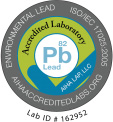 Mold is a type of fungus that is often found in homes. Mold can grow on walls, roofs, water pipes, food items, and plants. It grows when clothes, carpets, furnishings, or wooden surfaces are left wet for more than a day or two, or when food spoils.
Mold is a type of fungus that is often found in homes. Mold can grow on walls, roofs, water pipes, food items, and plants. It grows when clothes, carpets, furnishings, or wooden surfaces are left wet for more than a day or two, or when food spoils.
After an unfortunate event such as flooding in your home due to storms or plumbing leaks, surfaces can remain wet for days or even weeks. This can allow mold to grow and may lead to harmful effects on human health.
Mold on Food Items:
If you see mold on the surface of foods it is likely that there are branches and roots growing below the surface, which you cannot see. There can also be invisible bacteria growing alongside the visible mold. When there is heavy mold growth, the root threads have likely invaded the food very deeply.
White colored dust on cheese, large spots on fruits, green colored dots on bread, and furry appearance on jelly surfaces indicate the growth of mold. It is prudent to throw away affected food as mold spreads quickly and can produce poisonous substances. Some molds can cause respiratory problems or allergic reactions.
Poisonous Effects:
Mycotoxin is a poisonous substance produced by mold. It appears on certain agricultural products and transfers its poison to the food. Apart from food poisoning, it can cause neurological problems and affect the mental health of an affected person. The molds that produce mycotoxins are found primarily in grain and nut crops.
Some mycotoxins, known as aflatoxins, are cancer causing. They are the most researched mycotoxins in the world and are caused by molds that grow on food and feeds including peanuts and field corn.
Respiratory Problems:
Respiratory problems are more likely to appear when a person is exposed to mold for long periods of time. Most molds found in the home do not cause severe reactions, but certain types can be more harmful.
Children, old people, and people with weakened immune systems are more likely to suffer from respiratory problems as a result of mold growth. A sore throat, coughing, sinus infection, asthma, pneumonia, inflammation, skin problems, allergies, eyes irritation, joint pain, migraines, and depression may occur as a result of mold.
Fungal Infection:
Certain types of fungus like toxic black mold can cause health issues in people. Common symptoms include poor memory, chronic coughing, eye irritation, rashes, chronic fatigue, shortness of breath, and headache. In severe cases, symptoms can include nausea, vomiting, and bleeding in the lungs and nose. Since black mold often grows in hidden areas of a house, it is often difficult to detect.
Black mold growth is most often associated with excess moisture in structural members of the home. This can be caused by pipe leaks, roof leaks, flooding, poor ventilation, and other conditions that cause building materials to remain wet for long periods of time.
Hypersensitivity:
Some people can be sensitive to exposure to molds in amounts that normally have no effect on most people. Those affected by hypersensitivity to mold need to be very careful to prevent problematic molds from getting into their homes by eliminating conditions that are conducive to mold growth, and also by preventing contamination from objects, people, or pets entering the home.
The growth of mold in homes is an issue that can be solved. If you suspect that you have a mold issue in your home, you should seek the help of a professional. For help with mold testing supplies and analysis, please get in touch with us today. SanAir Technologies Laboratory conducts sampling and testing of all hazardous materials present in your environment. Call us at 804-897-1177 or visit www.sanair.com for further details.












